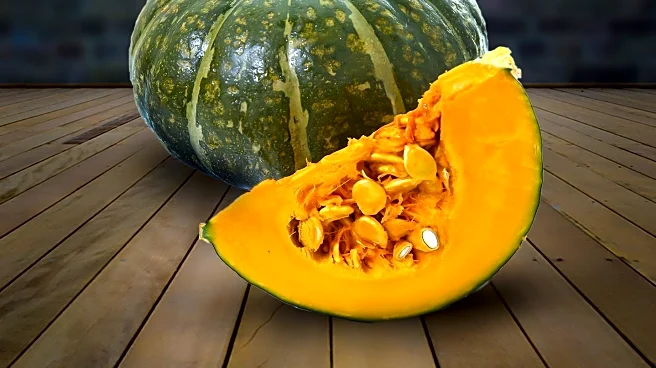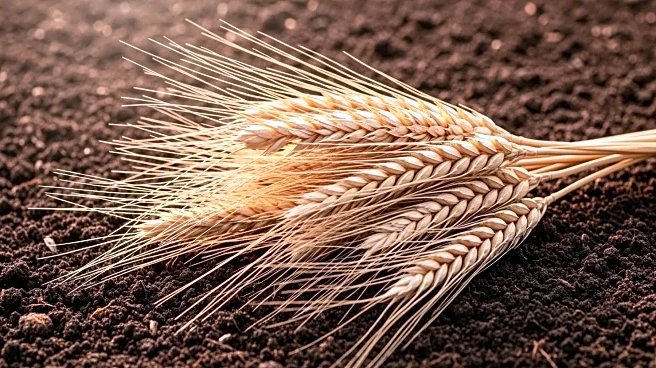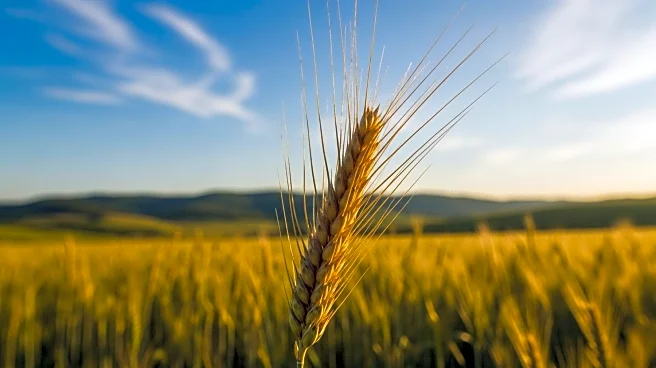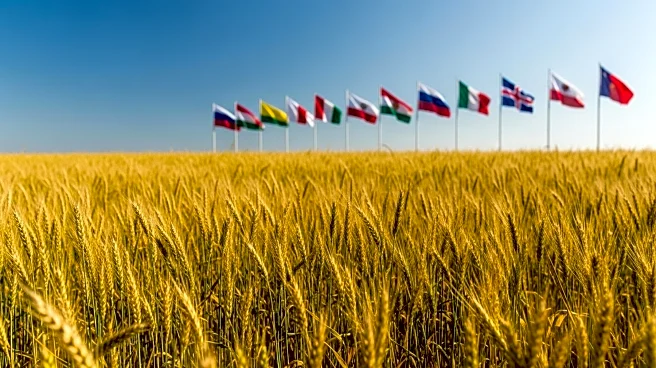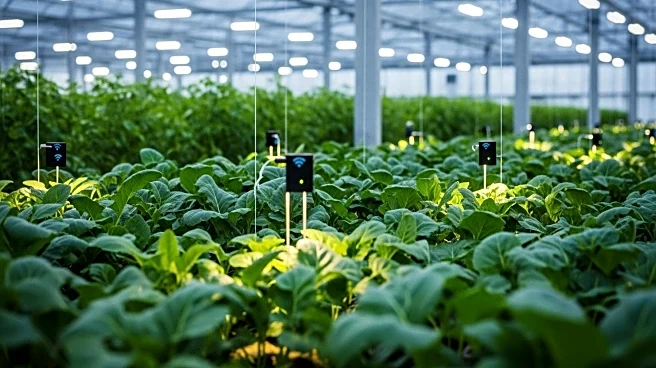What's Happening?
Modern Farmer has published an article detailing various pumpkin varieties that are suitable for different cultivation needs and uses. The article explores the historical context of pumpkins, noting their association with Halloween and their origins in North America following the migration of Irish and Scottish people during the Potato Famine. It highlights several pumpkin types, including 'Batwing', 'Casperita', 'Pik-A-Pie', and 'Solid Gold', which are ideal for short-season growth. Additionally, long-maturing varieties such as 'Jarrahdale', 'Jack-o’-Lantern', 'Galeux d’Eysines', and 'Cinderella' are discussed for their unique characteristics and uses. The article also covers giant pumpkins like 'Atlantic Giant' and 'Big Max', which are popular for contests and culinary uses.
Why It's Important?
The article underscores the significance of pumpkins in agricultural practices and cultural traditions in the U.S. Pumpkins are not only a staple of fall festivities but also a versatile crop that can be used for decoration, culinary purposes, and competitive growing. The diverse varieties mentioned offer farmers options for different climates and market demands, potentially impacting local economies and agricultural strategies. By providing insights into disease-resistant and high-yield varieties, the article aids farmers in making informed decisions that could enhance productivity and profitability.
What's Next?
Farmers and growers may consider integrating these pumpkin varieties into their planting schedules, especially those suited for specific climates and disease resistance. As the fall season progresses, there may be increased interest in these varieties for both commercial and personal use, potentially leading to higher demand at local markets and farm stands. Additionally, the focus on giant pumpkins could spur interest in agricultural competitions, fostering community engagement and tourism.
Beyond the Headlines
The exploration of pumpkin varieties also touches on broader themes of agricultural innovation and sustainability. By selecting pumpkins that are resistant to common diseases, farmers can reduce reliance on chemical treatments, promoting environmentally friendly practices. Furthermore, the cultural significance of pumpkins in American traditions highlights the intersection of agriculture and cultural heritage, emphasizing the role of farming in preserving historical customs.
